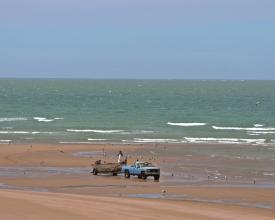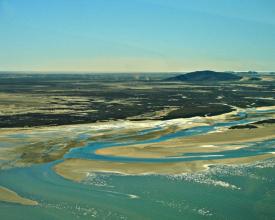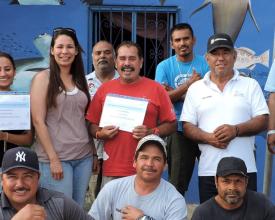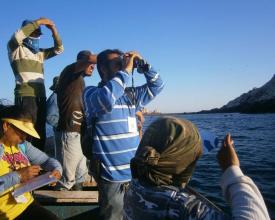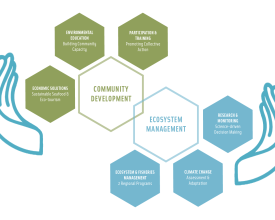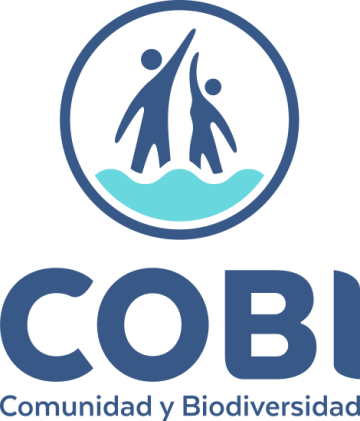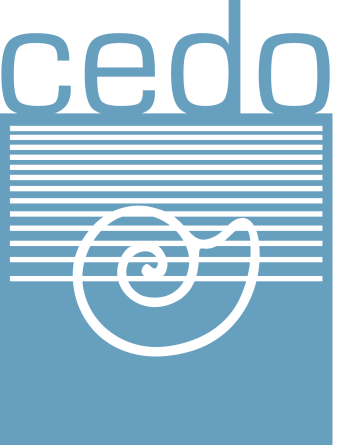
MSP for integrated fisheries management in the Northern Gulf of California, Phase I
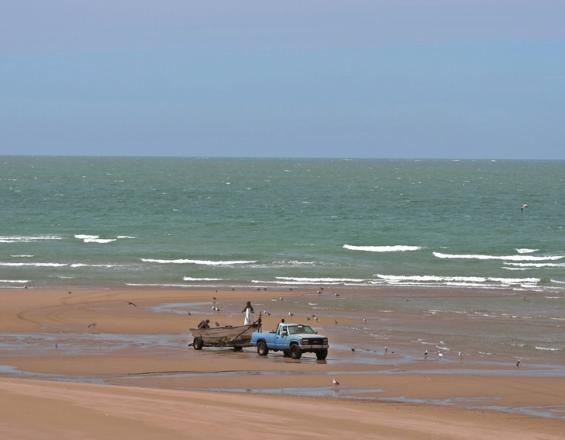
In the Biological Corridor from Puerto Peñasco to Puerto Lobos, Sonora a coastal -marine spatial planning and ecosystem management process is emerging. It is a framework to resolve growing conflicts between different stakeholders/users in the region and a mechanism for building ecosystem stewardship. Through a bottom-up process, traditional users (fishers & oyster farmers) are engaged in designing spatial solutions with a management team including scientists and government.
Context
Challenges addressed
As described by fishermen the main problems in the corridor ecosystem are: 1) Lack of fishing permits; 2) Illegal fishing (lack of compliance with the law); 3) Lack of surveillance and enforcement (lack of application of the law); 4) Entry of fishers from other areas with restrictions; 5) Distance from large cities and elevated costs; 6) Conflict with industrial fishers; 7) Lack of adequate management tools; 8) Loss of landing sites as coastal development increases. Other challenges that have been identified include: 1) lack of social structure or experience for working together to solve problems within the fishing sector, between communities, and between local, regional and national government authorities; 2) changing socio-political dynamics and management restrictions in the adjacent Upper Gulf of California/Colorado River Biosphere Reserve, where the primary management driver is the conservation of two endemic and endangered species: vaquita and totoaba.
Location
Process
Summary of the process
CEDO's approach balances community development and ecosystem management. Our fundamental building block is trust and meaningful relationships. This is accomplished first by engaging communities to identify their needs, which usually involves socio-economic issues, and helping address the problem from their perspective. Creation of a governance structure and process which is transparent, inclusive and involves interactions with other sectors to find solutions develops meaningful relationships and collective action. Capacity building through education strengthens communities for working together and making good decisions. Active participation of stakeholders in all aspects of the process, providing opportunities to contribute by generating information, communicating, and making decisions, is essential to maintain engagement, promotes an active society taking responsibility for their future. By integrating traditional knowledge and science to produce a science-driven process, we help create a common language for all stakeholders that becomes the standard for measuring effectiveness of management. Stakeholders participation in monitoring strengthens the design of fisheries and ecosystem management tools.
Building Blocks
Building trust and meaningful relationships
Our initial approach with fishermen was to have them identify the problems they were facing. Since fishing is their main economic activity, we gave focus to addressing their needs through this lens. They expressed a need for fishing permits, so we began helping them through the process for registering their boats - a first step, and by connecting them with the government who is responsible for giving them permits. We helped build a governance structure and transparent and inclusive process which gives fishers access to the government by bringing the government to the table to address their problems. Individually they were unable to get the government's attention. This has helped build working relationships with authorities where they have to respond directly to stakeholders, building meaningful relationships along the way. The Corridor program addresses their needs, especially their economic needs. In addition to helping resolve fishers need for clarifying their rights to fish and helping them move towards more sustainable fisheries, we also are identifying alternative economic options of interest to communities, such as ecotourism and will help find resources to move these forward as sustainable economic options. We will also connect fishers to sustainable markets.
Enabling factors
Trust. It is a difficult for an environmental organization to lead such a process with fishermen, as this sector is known for being strongly focused on conservation outcomes. The leading organization facilitating this process, CEDO, has worked in the communities of the region for 37 years and built trust with fishers to work together. CEDO's persistence and willingness to help them with their issues as well as our own agenda, helped build a working relationship and trust with fishers.
Lesson learned
Fishermen trust is influenced by many factors. There are some that try to undermine the trust that fishermen have in CEDO by starting rumors that fishermen listen to about CEDO's motives for conservation. It is important to maintain regular dialogue with fishers and to have transparent, well documented processes that show social equity. Through CEDO's many environmental education programs throughout the years, and through this program, fishermen have the opportunity to learn about the ecosystem and ultimately to decide for themselves whether it is important to manage their ecosystem well and support conservation.
Strengthening Capacity for Collective Action and Informed Decision-Making
The fishing communities of the Corridor are isolated from one another and are marginalized from the regional economy. They have few opportunities to interact at that scale. Even within a community there is little social structure. The project created a forum for interaction and collaboration for solving problems. To strengthen capacity to participate in this forum and planning process, we have focused on building fisher capacity to represent their communities in an Intercommunity Management Group. Workshops have been offered on communication, negotiation, and other leadership skills. We developed materials, held workshops and organized exchanges with other fishermen to give them a better understanding of the variety of management tools that can be applied to improve fisheries and reduce conflicts. This is key to setting the stage for informed decision-making and adopting new management instruments. For more comprehensive acceptance of the process, all community members should be informed. Through communication programs, messages on billboards, radio addresses, social media and workshops, the program involves the entire community to understand and support the process.
Enabling factors
CEDO has a long history of promoting environmental literacy and culture in the region and has tools and resources that aid in this process. CEDO's ability to communicate in a language that fishermen understand facilitates learning. As a local organization, CEDO can adapt its scheduling of meetings and classes to the rhythm of fishing which is somewhat unpredictable due to environmental conditions. Fishermen and communities are eager to learn, but cannot afford to miss income from fishing.
Lesson learned
One challenge is transportation. Communities are isolated from public transportation, and CEDO has tried to provide this, but without adequate resources. Solutions could be found if funds were available to purchase vans. One of the most important components for effective capacity building is to speak the language of your audience and to create experiences for interchange, rather than talking at the public. This creates a positive learning environment both for the facilitator as well as the fishermen. Capacity building is also strengthened through direct participation and opportunities to learn while doing, which we promote as another building block in this process.
Participation throughout the process
This project involves fishermen and other actors in planning their future use of the coastal marine area of the Puerto Peñasco Corridor, but it also seeks meaningful engagement of stakeholders from the onset by engaging them in implementing actions to improve ecosystem management. Many practitioners of CMSP are frustrated with the timeframe involved in moving from planning to implementation. Stakeholders get frustrated too. This project gets stakeholders involved in activities such as cleaning beaches, monitoring resources, analyzing data, distributing materials to their communities and in supporting youth in their community. It shows them what collective action is and how it can be implemented in so many ways. It also serves in building their capactiy for ecosystem management.
Enabling factors
CEDO is involved in programs for youth and other community members, such as resource monitoring and beach cleanups and we conduct other activities to engage people. We offer opportunities for stakeholders to be involved in concrete actions that have an immediate impact on their children, their beaches and their understanding of resources. While the long planning process takes place, these actions serve to inspire participants and to show them what they can accomplish by participating and working together.
Lesson learned
Fishermen don't understand the time-scale required for an integrated management program. They get impatient and want immediate results, which is why it is important to engage them in the work that needs to be done to develop a functional managment system. Sometimes we forget to remind them of the big picture and the timeline that shows where they are going and what they have accomplished so far. They fear the government will not do their part in this process. Maintaining active engagement of all levels of the government is key, but also a challenge, as individuals are changing. Government is constantly being approached to solve problems in the short term rather than using a more comprehensive, integrated approach and so fishers must be encouraged to wait. Creating spaces for communities to meet with government is important. Long-term funding for such a comprehensive and integrated approach needs to be guaranteed.
Integrating scientific data and traditional knowledge to inform management
The Corridor ecosystem has been well-studied and over 200,000 geo-referenced data points are available to help establish spatial management plans. Fisher communities have participated in monitoring resources in the past and currently are generating data on their catch. This in combination with other data from the literature, and from interviews and mapping processes that fishermen participate in, help integrate a wealth of traditional knowledge and scientific information to produce realistic management proposals. Even when presented with complex analyses of this data resulting from computer models such as INVEST and ZONATION, fishers have shown confidence in the information presented to them and they validate it. By creating a decision-making process that uses evidence from these various sources that all stakeholders believe in, we are building a science-based decision making process. We plan to work with stakeholders to define the best indicators for tracking the impacts of management, and then design a participatory process for monitoring these, developing a common, science-based language for measuring the effectiveness of the program. The program is building a digital platform that will serve to communicate the advances.
Enabling factors
CEDO has generated data on this ecosystem for the last 37 years, making it possible to integrate science into the process. The long history of fisher participation in monitoring is also helpful, as they have not questioned the validity of the data they are seeing, in general, and they have the opportunity to fine tune results as well. Government validation of the data generated is key. Government has contributed financially to producing the data and CEDO's work is known and respected.
Lesson learned
Funding for long-term monitoring is important and it must include the resources for data management and analysis. Engaging fishers in monitoring, sharing other data sources with them, and producing results that are consistent with their understanding of the ecosystem are powerful in getting them to trust the results. The program also involves a technical team who understands the process and participates in evaluating critical components of analysis. Getting government buy-in is critical for getting them to use the data for policy. Sharing results, credit and ultimately publications with government researchers, can offer important incentives to the government to work together on production and analysis of data.
Impacts
The fishing communities of this Corridor were mostly unorganized and had little experience working together to find solutions. The continued and active participation of fishers to improve resource management is a testimony of a positive impact. They have designed and agreed upon a variety of fisheries management instruments: 1) fisheries refuges (protecting about 5% of the area); 2) locally managed areas (which even in their conception are strengthening stewardship); 3) permits and 4) catch quotas (the latter two help control fishing effort and overfishing). The process is strengthened with regular capacity building exercises and activities such as monitoring and workshops for designing management tools, seeking meaningful engagement of fishers in planning for their own future. The creation of a governance structure with the local users at the center, where they have access to government and scientists, creates a transparent process which helps build confidence and stewardship for the management plan within and between communities. The proposed solutions focus on fishers' primary economic activity, address their needs, help clarify rights and reduce conflict. It is too early to see the environmental impacts of this solution, but the spatial management instruments are designed to improve fisheries catch while offering protection of key habitats and species at the same time.
Beneficiaries
The first phase of the project targets mostly traditional users: 1076 small-scale fishermen from six communities and 150 local wetland users from six wetlands are the primary beneficiaries with government and scientists benefitting as well.
Sustainable Development Goals
Story
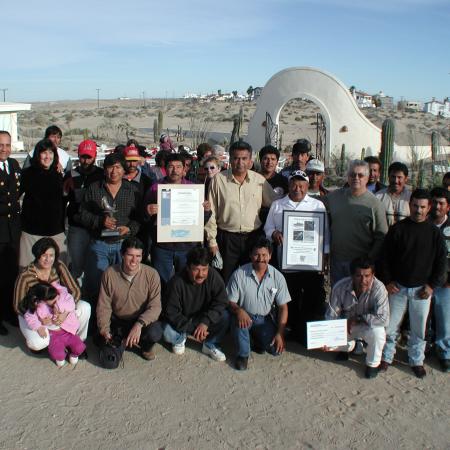
In 1996, CEDO did the first assessment of small-scale fishing in the Upper Gulf of California and that is where we met a group of commercial divers, who expressed concern about their diminishing resources. The black murex snail and rock scallop were their most important fisheries and so we worked together to create some voluntary reserves and to monitor them. We developed a management plan for the scallop, and fishers were given exclusive use to a type of local management area. Due to the nature of their work, diving, they required more cohesion and cooperation than other fishermen, and this group was exemplary. They were granted Mexico's National Conservation Award in 2003. And, more importantly, their resources started rebounding and they became firm believers in the potential benefits of marine reserves or refuges. Despite their good management practices, however, by 2012, more fishers entered the region and began exploiting the diving resources, depleting them one by one, even without permits. In the divers attempt to get the government to enforce the law, they found themselves more vulnerable. Enforcement became the limiting factor and it became clear that their call for help would not be heard unless we could get the attention of the government, at a scale that they would listen to. It was also clear that we had to engage the stakeholders that were illegally taking resources without concern for sustainable management. This helped us define a new scope for fisheries management that would encompass all of the users within a defined area. Our research had helped us identify this area and the communities that would be involved. Getting the six communities of the Corridor involved was a challenge, as they were not at all organized and many did not have permits, but they understood that this left them vulnerable. Through many hours of workshops, talks, and planning, the dynamic has changed and now many fishermen have become strong spokes persons for their participation in improving management. A threshold for change has been reached both within local communities and with the government, who is learning about a new way to manage resources. Once the management intruments are formalized and implemented, the positive environmental impacts will be transparent to all and this will seal the support of more of the region's stakeholder in this process for self-governance.
